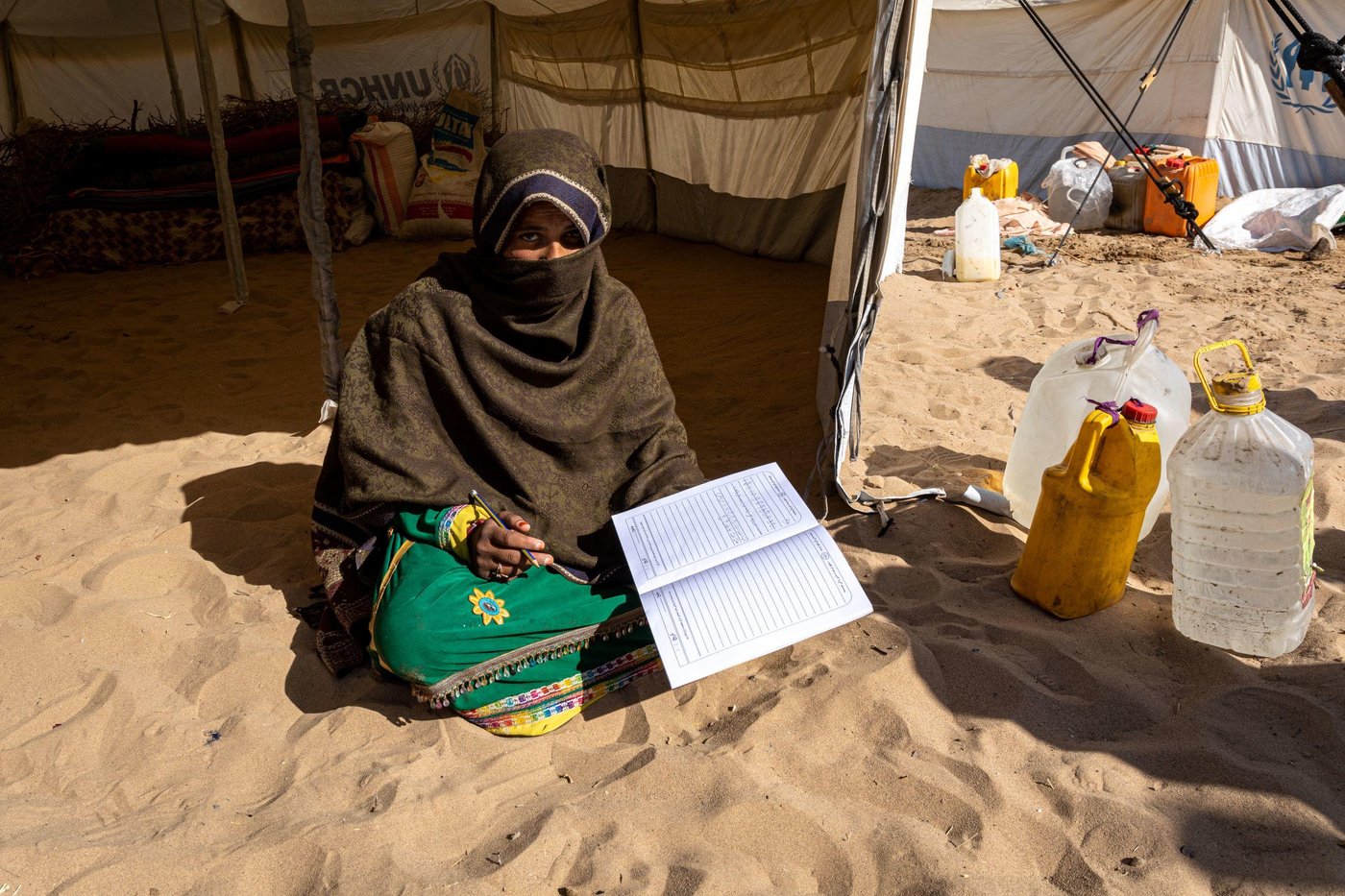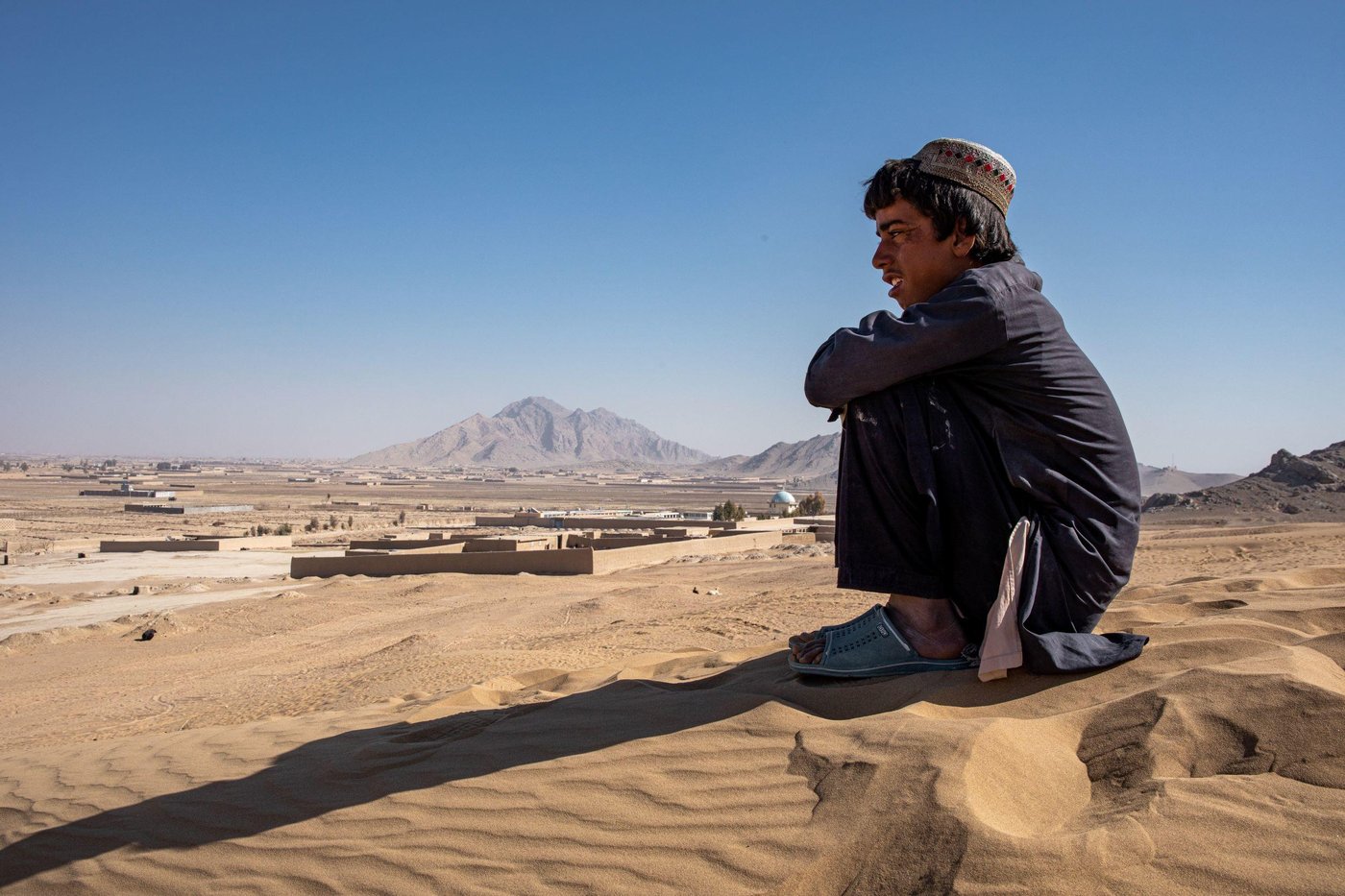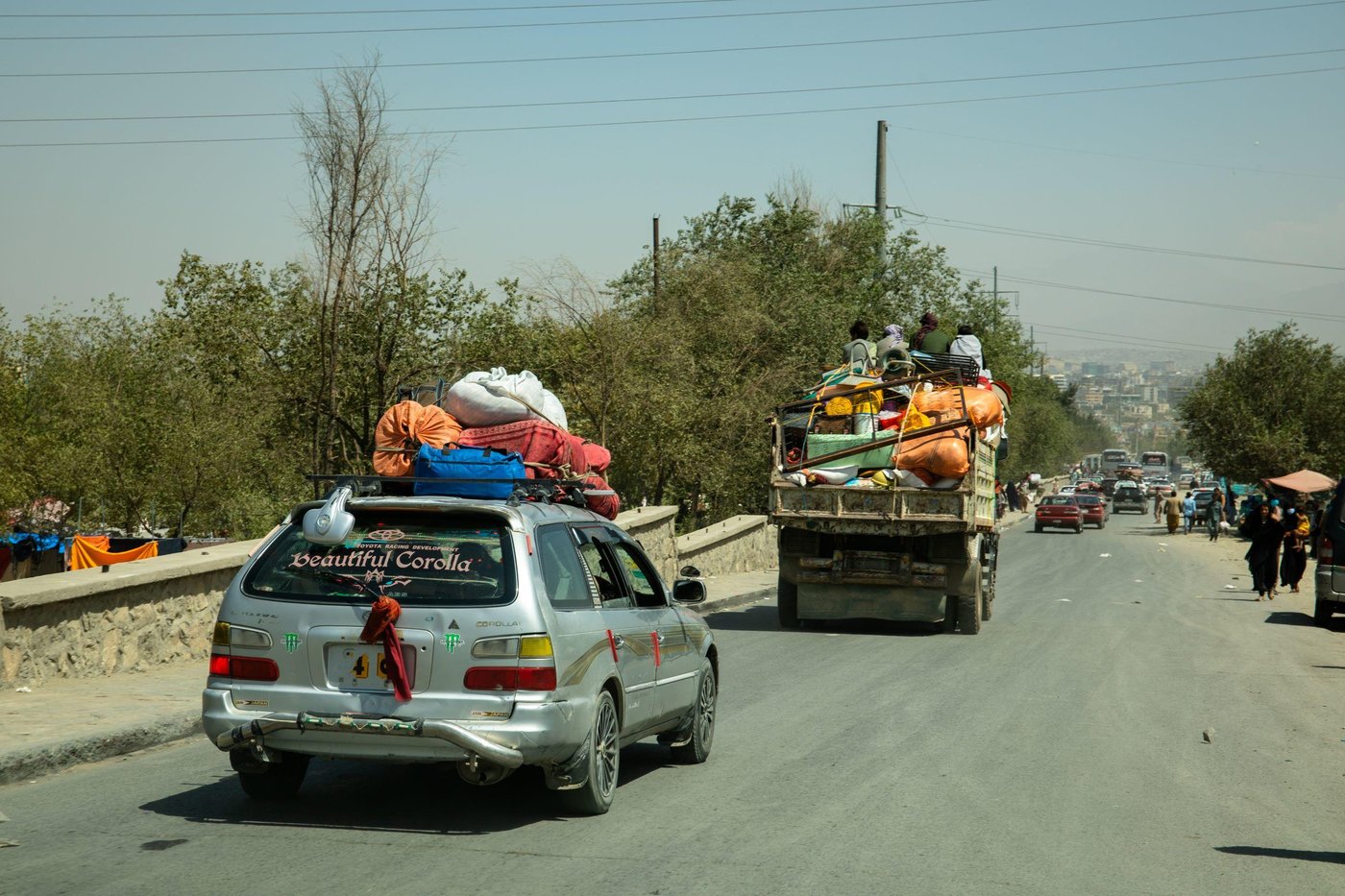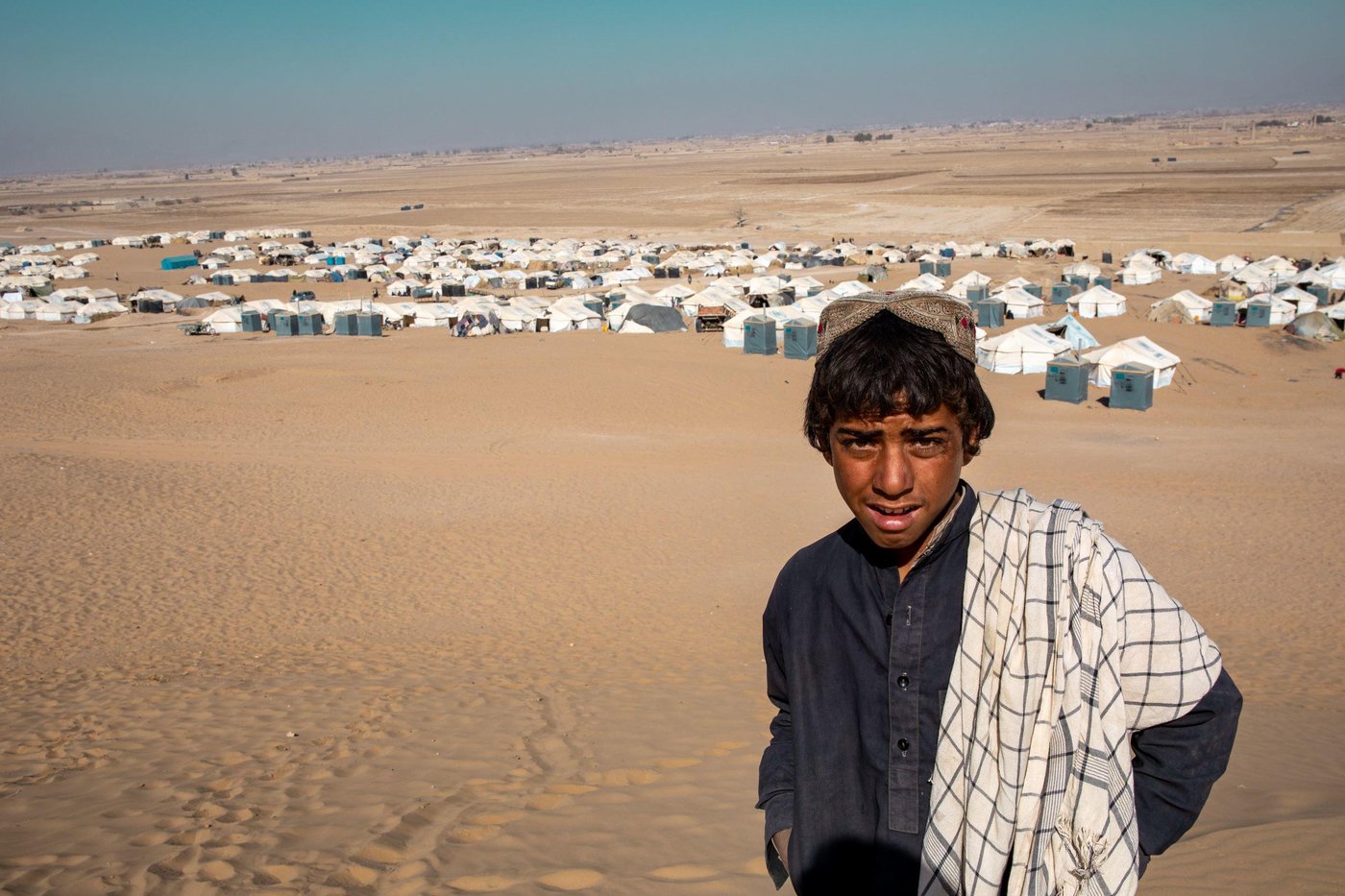Mohammad is one of thousands of children who have been forced to flee in the past year. In Afghanistan, more than 3.5 million people have been displaced within the country due to conflict and drought.
Since January more than 550,000 people have fled their homes in Afghanistan. Every day, more than a thousand children are forced to flee as a result of acts of war. UN OCHA estimates that more than 18 million Afghans require humanitarian aid.
For the past six months, Mohammad has lived with his family in Jamal Nika Camp, which is home to about 500 families. The camp is located in a desert area outside the city of Kandahar.
“None of the children in the camp go to school. I’ve never been outside the camp, and I don’t know how far it is to the nearest school. I have missed many important exams. There is nothing to do here. We have no future here,” says Mohammad.
A dramatic situation
- Every day, more than a thousand children are displaced.
- Never before have so many children been killed and injured in Afghanistan. In the first half of this year, 468 children were killed.
- Schools, which were supposed to be safe spaces for growth and development, have become part of the battlefield. Last year, acts of war led to the closure of 250 schools, and more than 120,000 children lost the opportunity to go to school.
- More than 2.6 million children urgently need educational assistance.
- Those who are sent to help are also affected. In June 2021 alone, 12 humanitarian aid workers were killed in Afghanistan.

Help with schoolbooks
Mother of three, Bibi Aisha, 37, and her family have sought refuge in the same camp. She sits cross-legged on the sand outside the tent that has become the family’s new home. In her left hand she has a notebook, in her right a ballpoint pen.
“Our family received 16,000 afghani [equivalent to USD 200] from the Norwegian Refugee Council to buy necessities. I spent some of the money on school supplies for my son, so that he could continue learning on his own. I myself have never had the opportunity to go to school, but now I am trying to learn the alphabet in our local language Balochi,” she says.
It doesn’t take much to help. EUR 25 is enough for a set of schoolbooks and writing material. Support our work!

Even before the coronavirus pandemic, only 52 per cent of boys and 41 per cent of girls in Afghanistan went to school. The figures for children from displaced families were even more discouraging: 67 per cent of the girls and 55 per cent of the boys were out of school.
“The situation is alarming, and we risk losing an entire generation of young Afghans,” says Eileen McCarthy, NRC Advocacy Manager for Afghanistan.
Twelve humanitarian aid workers killed in June
Afghanistan is still one of the most dangerous countries in the world for humanitarian aid organisations. And June 2021 was one of the deadliest months for aid organisations in Afghanistan: some 12 humanitarian aid workers were killed and 28 wounded.
The increased fighting makes their work even more difficult and dangerous.
“We put the safety of our employees first, but we are an independent organisation, and we negotiate with all parties regarding humanitarian access, so that we can continue to reach out with help to those who are in the greatest need,” says McCarthy.

We have temporarily paused our programming as the situation deteriorated rapidly but are doing our best to ensure that we can get back to work to reach those men, women, girls, and boys who need it most, including those displaced by the latest fighting.
McCarthy emphasises: “Funding for children’s education is becoming more important than ever. It also means that we need more money and support from donors.”
No time to lose
“There is an urgent need to strengthen the relief effort,” continues McCarthy. “The UN estimates that about 2.6 million children in the country need educational assistance. This need is increasing, as more than a thousand children are forced to flee every day.”
Education is emergency aid, but it is also the best long-term investment we can make. In 2020, we ensured that more than 92,000 children received education in Afghanistan. About half of them were girls.
“We have no time to lose. We also cannot afford to lose any children. If Afghanistan is to break the cycle of war and violence that has ravaged the country for over 40 years, children and young people must be educated to ensure stability, long-term peace and sustainable development,” says McCarthy.
NRC has 1,600 employees in Afghanistan and works in 14 provinces. Read more about our work in Afghanistan.


